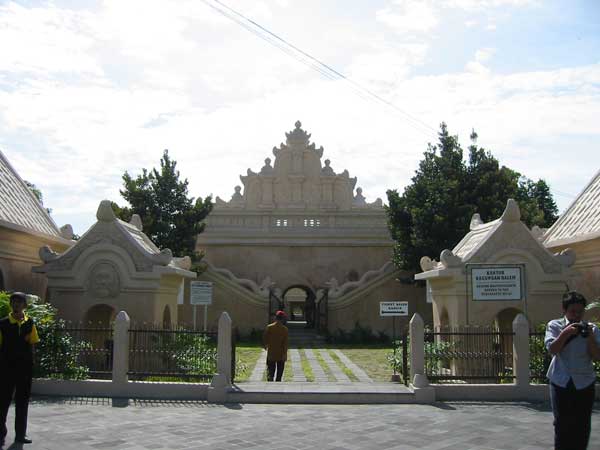Yogyakarta/Jogja is a city in the Yogyakarta Special Region, Indonesia. It is renowned as a centre of classical Javanese fine art and culture such as batik, ballet, drama, music, poetry, and puppet shows. Yogyakarta was the Indonesian capital during the Indonesian National Revolution from 1945 to 1949.
Yogyakarta is the cradle of civilization on Java. This city was the seat of power that produced the magnificent temples of Borobudur and Prambanan in the 8th and 9th century and the new powerful Mataram kingdom of the 16th and 17th century. Until today this city continues to produce philosophers, thinkers, master painters and master craftsmen.
This is university town, where students from all over Indonesia from different ethnic backgrounds flock to pursue knowledge and wisdom. For this reason, Yogya is both very Javanese and at the same time a melting pot of different Indonesian cultures.
Yogyakarta (or Jogjakarta) is known as Neverending Asia for its endless attractions and appeal. As one of Indonesia’s 32 provinces, this city is one of the foremost cultural centers of Indonesia. From climbing the magnificent Borobudur temple, visiting the Keraton, - the Sultan’s Palace - to watching silversmiths produce amazing jewelry at Kotagede, to shopping up a storm at Malioboro road, you’ll never be bored in this relatively small yet bustling city.
Yogya is a city of history. In the 18th. and 19th centuries, it was the seat of the re-emerged Mataram kingdom. Today many of the Mataram traditions live on and are a part of the city’s daily life. Yogya is a place to come to connect with the centuries’ old traditions, culture and the history of Java as well as bask in the friendliness of the local people. It is a place with a unique charm which seldom fails to captivate visitors.
History Of Yogyakarta
The City of Jogjakarta and the Kingdom of Jogjakarta was established as a result of a "Gianti war treaty" (Perjanjian Gianti) by HRH Prince Mangkubumi, who later become HRH Sultan Hamengkubuwono I. Officially, the creation of Kingdom of Jogjakarta is dated to October 7, 1756 as a result of civil war among the bloodline of The Kingdom of Mataram. The civil war was fought against Hamengkubuwono's and his elder brother, HRH Sunan Pakubuwono II. This civil war marked the end of the Kingdom of Mataram and resulted in the birth of the Kingdom of Jogjakarta and the Kingdom of Surakarta.
The root of the civil war started when Sunan Pakubuwono II agreed to cooperate with the Dutch colonial government and submit to foreign (western) powers. His younger brother, HRH Prince Mangkumbumi (HRH Sultan Hamengkubuwono) stood against the concept, due to concern that his people would become slaves under Dutch rule. The Javanese slaves were used to work for businesses owned by V.O.C. and the Dutch Colonial Government and exported to present day Suriname in South America. In the Netherlands itself, some of the Dutch people stood against the policy of their home government.
Prince Mangkubumi fought until the defeat of the Pakubuwono forces and declared sovereignty in the Kingdom of Jogjakarta south of the original Kingdom of Mataram. Because of this historical act of bravery and sacrifice, Jogjakarta is given Special Administrative Region (SAR) status, making the Province of Jogjakarta the only province headed by a monarchy.
Museums and town centre
Due to the importance of Yogyakarta during the war of independence from the Dutch, there are numerous memorials and museums. Yogya Kembali, and Fort Vredeburg are two major museums of about 11 named in the city.
To the east of the town centre is a large air-force museum; as Indonesia was for a period in the Soviet sphere of influence this museum contains a number of vintage Russian aircraft not widely available for inspection in the NATO sphere of influence. The collection includes examples of the Mig 15 trainer (NATO designation Mongol), MiG 17 (Fresco), MiG 19 (Farmer), Mig 21 (Fishbed) and Tu16 (Badger), together with an assortment of American and British aircraft.
In addition, there are about 70,000 handicraft industries based in Yogya and other facilities like various accommodations and transportations, numerous food services, travel agents, and proper tourism support, and also tour a security team support called the Tourism Police, locally known as Bhayangkara Wisata.
Yogya is famous as a centre of traditional textile production, particularly batik. The distinctive batik of Yogya uses the basic colors of brown, indigo and white with in geometric designs. Many young artists of Yogya have also embraced the modern art of batik-painting.



Comments
Post a Comment